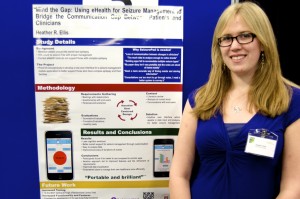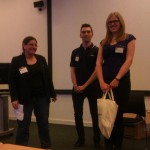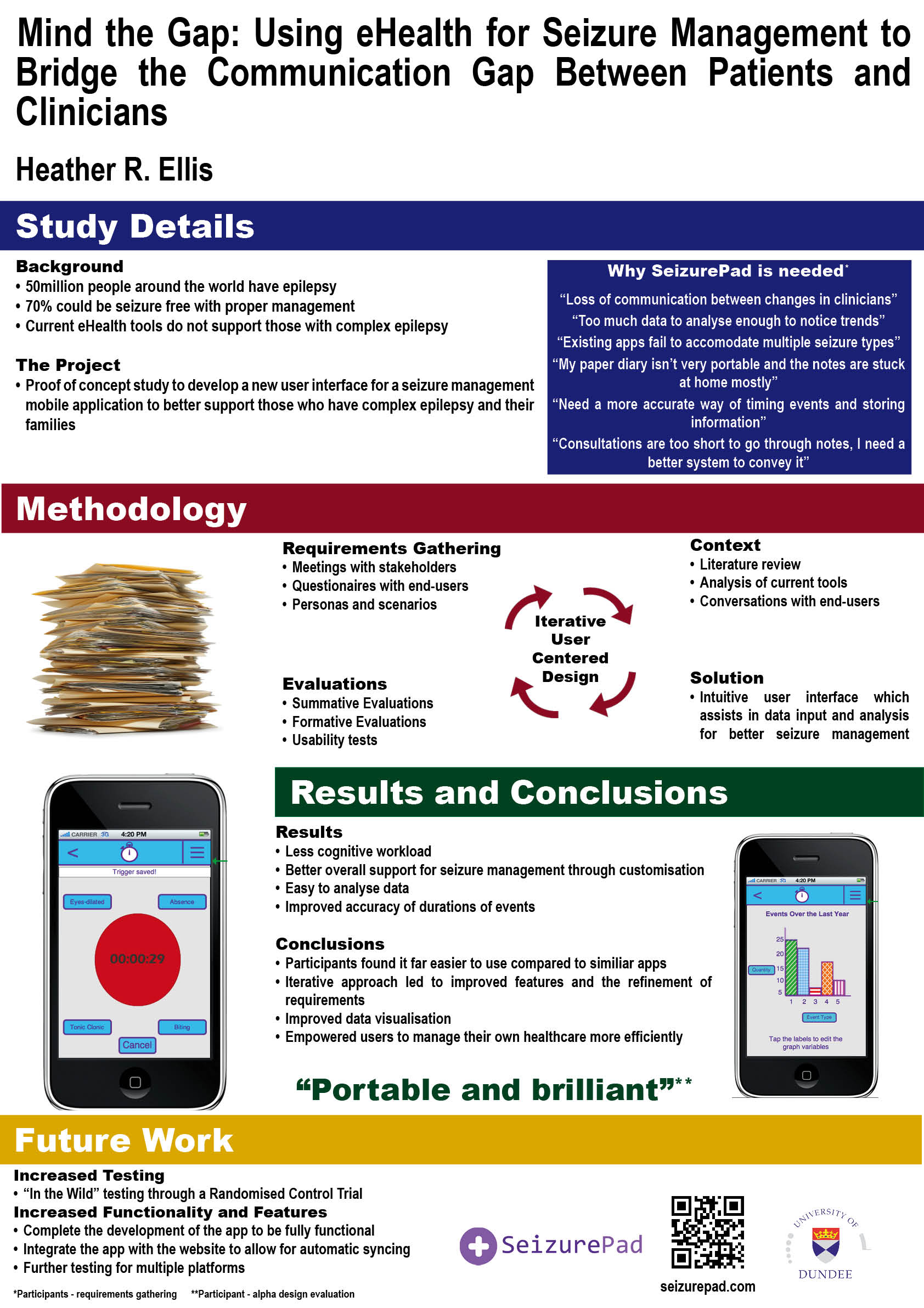Background
Over the last thirty years Alternative and Augmentative Communication (AAC) has become more accepted within society [2, 4]. Although still not perfect, the advances in technology has produced a range of devices that now allow users to lead fuller lives. However, AAC users often have other challenges in life in addition to communication difficulties. Other medical conditions and symptoms of the underling cause of a limited ability to communicate through vocal tracts presents these users with yet another barrier. For example, limited mobility, physical impairments and pain are a few additional challenges face by those who use AAC.
With these additional challenges comes an increase in feelings of isolation, lack of motivation and a feeling of being useless [2, 6]. This can further reduce the AAC user's quality of life [6]. During these times support is sought from a range of sources. Humans are sociable and seek support from others. This is especially the case when the person is struggling emotionally or physically. Although there has been evidence for the benefits of face-to-face support groups [2, 6], typically speaking AAC users are often unable to benefit from these sources of support. Their limited mobility, inability to express themselves fully in a group setting or the distance required to travel to support centres restricts these users from seeking the additional care they need in this format [2, 4, 6].
eHealth
With the growing field of digital health care, or eHealth [7], technology is presenting new ways or assisting users in the medical field [3]. eHealth is a low cost method of assisting users in a mixture of support, including online forums. Online forums and pages can be found on websites and social media sites which support those with various conditions. These have been found to compliment the formal care provided by the National Health services [2, 3, 4, 6, 8]. They, and other eHealth tools, encourage the user to self manage their condition through self-efficacy [3, 4, 6] and create a community who truly understand what they are experiencing reducing the sense of isolation [4, 6].
However, the AAC users are often excluded from the full benefits of these digital support tools because of a lack of consideration from the developers of their additional needs. In the case of websites, the forums are often very difficult for AAC users to traverse []. The Web Accessibility Initiative (WAI) [9] presents a set of guidelines to develop digital spaces that are inclusive. This solves some issues but focus more on the access of the information rather than the active participation of users in these support areas.
Research has demonstrated the benefits of a social community and its improved results compared to face-to-face groups [4, 6]. For an AAC user, ease of access from their home and textual based forms of communication are often easier. However, in order to try and navigate through the complex sites it is tiring and frustrating. This only strengthens the gap between the AAC user and the eHealth system.
User Centred Design
Bryen et al. [2] emphasise the need for web inclusivity and a new method of providing navigation support. When these assistive means are applied to support forums it presents an equal opportunity for AAC users to actively seek support from people in a similar position to themselves. Further research has proven the benefits to AAC users when systems are designed with them [1,6] as this helps ensure that their feedback creates a system that supports their needs, abilities and requirements.
User Centred Design is the methodology where the developers and designers focus on the end user’s needs during development. This involves participant meetings where requirements are acquired, the system is evaluated and feedback is given to the developers. Focus groups and interviews have been shown to aid in their process of understanding users, specifically AAC users [1,6, 8]. It highlights new areas perhaps unthought-of of by the developing team before which in turn creates a more functional tool [3, 4, 5, 8].
Discussion
eHealth can be largely beneficial to AAC users in supporting them in their daily management of the challenges that they face [4]. However, developers need to accommodate their additional needs in order to prevent a further exclusion from a support tool. Participant involvement is showing clear signs of improving eHealth tools for all users [1, 3 ,5, 6, 8] and can shape the design of the eHealth to be easier to access for AAC users.
In addition, improvements made to eHealth tools present another step towards better medical and emotional support [3, 4, 6]. The communication gap between medical staff and patients can be improved [3] and a more inclusive care plan given. It presents AAC users with more independence and a platform for self-management which has been shown to be beneficial to the coping process [4]. Sharing experiences and methods of managing daily challenges aids in improving the AAC user’s quality of life.
However, care must be taken when delivery a new tool. Thought must be given to the dexterity, knowledge and access needs of the users [3, 5, 8]. It is not simply enough to make an eHealth tool that is usable by those who are visually impaired. Other AAC users exist who use non-typical input devices, and who use a symbol based languages.
Conclusion
The WAI is a step forward in improving the accessibility but more usability consideration need to be considered when developing eHealth tools [4] especially those when developed on mobile devices [3, 4]. Developing systems which cater for those who have different needs widens the user group for a system and therefore the market value. If more user participation is involved in the development stages, eHealth can be used to bridge the communication and support gap between medical staff, carers and AAC users [2, 6]. This will have a positive effect on the quality of life [2, 3, 6] of an AAC user and generate a more robust support channel for a lower cost. However, this will only succeed if the users are involved through a participation driven development approach.
References
[1] Barratt A, Prior S, Waller A. Addressing Narrative Retrieval in Personal Narrative Systems. 15th Biennial Conference of the International Society for Alternative and Augmentative Communication (ISAAC), (Pittsburgh, PA, USA, July 28 - August 4, 2012).
[2] Bryen, J.N., Heake, G., Semenuk, A., and Segal, M., 2010, ‘Improving Web Access for Individuals who Rely on Augmentative and Alternative Communication’, Augmentative and Alternative Communication 2010, Volume 26, Issue 1, pp 21-29.
[3] Ellis, H.R, 2013, ‘Seizure Frequency Analysis Mobile Application: The Participatory Design of an Interface with and for Caregivers’, CHI EA '13 CHI '13 Extended Abstracts on Human Factors in Computing Systems, pp 2683-2688.
[4] Light, J. and McNaughton, D., 2012, ’The Changing Face of Augmentative and Alternative Communication: Past, Present, and Future Challenges’, Augmentative and Alternative Communication 2012, Volume 28, Issue 4, pp 197-204.
[5] Maloney, D. and Preece, J., 2005, ‘A Multilevel Analysis of Sociability, Usability, and Community Dynamics in an Online Health Community’, ACM Transactions on Computer-Human Interaction (TOCHI), Volume 12, Issue 2, pp 201 – 232.
[6] Moore SK, Guarino H, Acosta MC, Aronson ID, Marsch LA, Rosenblum A, Grabinski MJ, Turk DC, 2013, ‘Patients as Collaborators: Using Focus Groups and Feedback Sessions to Develop an Interactive, Web-Based Self-Management Intervention for Chronic Pain’, Pain Medicine 2013.
[7] Pagliari, C., Sloan, D., Gregor, P., Sullivan, F., Detmer, D., Kahan, J.P., Oortwijn, W., MacGillivray, S., 2005, ‘What Is eHealth (4): A Scoping Exercise to Map the Field’, Journal of Medical Internet Research 2005, Volume 7, Issue 1.
[8] Prior, S., Waller, A., Thilo, K., 2013, ‘Focus Groups as a Requirements Gathering Method with Adults with Severe Speech and Physical Impairments’, Journal Behaviour & Information Technology 2013, volume 32, Issue 8, pp 752-780.
[9] Web Accessibility Initiative (WAI). Available: http://www.w3.org/WAI/. (10th Nov 2013)



